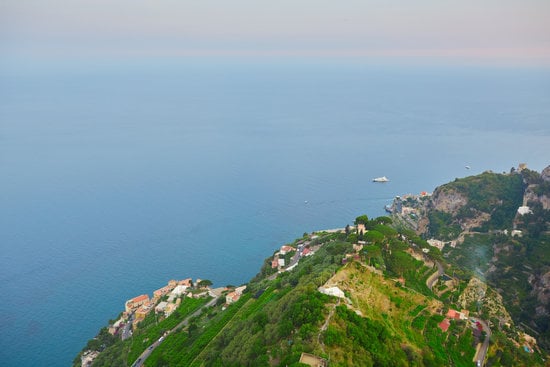The influx of Italian immigrants to America in the late 19th and early 20th centuries marked a significant chapter in the history of American immigration. These brave individuals embarked on a journey that would forever change their lives and shape the cultural landscape of America. In this article, we delve into the fascinating story of how Italian immigrants traveled to America, capturing the trials, triumphs, and lasting legacy of this pivotal period.
The decision to leave Italy and seek a new life in America was driven by a multitude of factors. Economic instability, social inequality, and political unrest plagued Italy at the time, leaving many Italians with limited opportunities for progress or success. Faced with these challenges, they set their sights on America, a land promising hope and opportunity for a better future.
Undertaking the arduous journey across the Atlantic was no small feat for Italian immigrants. Ocean voyages played a central role in their migration experience, as they navigated through an ocean of hope and uncertainty towards their newfound destiny.
From steamships to passenger liners, various transport options were available to these brave adventurers as they boarded vessels bound for America. However, with these travel options came great challenges and risks-long months at sea filled with cramped conditions and dangerous illness were commonplace.
As we embark on this exploration of Italian immigration to America, we will uncover not only the physical journey undertaken by these immigrants but also their arrival at Ellis Island-the gateway to their dreams. We will discuss the significance of Ellis Island as a symbol of hope and opportunity for Italian immigrants and shed light on the experiences they faced upon arrival.
Moreover, we will delve into the establishment of Italian American neighborhoods such as Little Italy in New York City – vibrant enclaves that served as cultural hubs and support networks within this foreign land.
Join us on this captivating journey as we trace the path taken by Italian immigrants to reach American shores. Through examining their circumstances and sacrifices, we gain a greater appreciation for their strength and resilience, all while exploring the lasting legacy they left behind in American society.
The Push Factors
Italian immigration to America in the late 19th and early 20th centuries was driven by various push factors that compelled Italians to leave their homeland and seek a better life abroad. These push factors can be categorized into economic, social, and political conditions that created hardships and limited opportunities for the Italian population.
Economically, Italy faced significant challenges during this time period. The country experienced high unemployment rates and low wages, making it difficult for Italians to support their families. Additionally, limited access to land and resources contributed to poverty among rural communities. Many Italians saw emigration as a means of escaping these unfavorable economic conditions and finding better job opportunities in America.
Socially, Italy was characterized by a rigid class system that offered little upward mobility for the majority of its citizens. Land ownership was highly concentrated among a wealthy elite, leaving many individuals without the means to improve their social status or quality of life. In addition, there were significant disparities in education and healthcare access across different regions of Italy, leading many Italians to view emigration as a chance for social advancement.
Politically, Italy experienced a turbulent period marked by frequent changes in government and social unrest. The unification process of Italy in the late 19th century brought about political instability and economic disparities between northern and southern regions. This further exacerbated the desire of many Italians to seek political stability and new opportunities elsewhere.
Overall, the push factors driving Italian emigration were multidimensional, encompassing economic deprivation, social inequality, and political uncertainty. These circumstances pushed many Italians towards taking the arduous journey across the Atlantic Ocean in search of a brighter future in America.
An Ocean of Hope
The Significance of Ocean Voyages
The Atlantic crossing played a crucial role in the process of Italian immigration to America. For many Italians, the journey across the ocean symbolized hope and opportunity for a better life. As they bid farewell to their homeland, they embarked on an uncertain voyage that would determine their future.
The Travel Options Available
Italian immigrants had several travel options when it came to crossing the Atlantic. Steamships and passenger liners were the most common modes of transportation during this time. These large vessels could accommodate hundreds, if not thousands, of passengers at once. While steamships were more affordable, passenger liners offered a higher level of comfort and luxury for those who could afford it.
However, regardless of the type of vessel chosen, the journey was far from easy. The trip across the Atlantic typically lasted anywhere from 10 days to several weeks, depending on weather conditions and other factors. Passengers endured cramped quarters, limited food provisions, and unhygienic conditions onboard. Seasickness was also a common affliction among travelers.
The Challenges and Risks
The journey across the Atlantic presented numerous challenges and risks for Italian immigrants. One of the main hazards was illness and disease spread throughout the crowded ship due to poor sanitary conditions. Outbreaks of cholera, tuberculosis, and other contagious diseases were not uncommon during these voyages.
Additionally, there were also dangers posed by harsh weather conditions such as storms or icebergs. While maritime technology had improved over time, accidents still occurred at sea. Shipwrecks or collisions with icebergs could lead to catastrophic consequences for passengers.
Despite these challenges and risks, Italian immigrants continued to undertake the difficult voyage across the Atlantic in search of a better life in America. Their determination and resilience are a testament to their dreams and aspirations for themselves and future generations.
Giuseppe, the Prophetic Statue
When Italian immigrants arrived in America, their first point of contact was often Ellis Island. Located in New York Harbor, Ellis Island served as the primary immigration station in the United States from 1892 to 1954.
Often dubbed as the “Gateway to America,” it played a crucial role in processing and screening the thousands of immigrants entering the country. This section will delve into the experiences of Italian immigrants upon their arrival at Ellis Island, highlighting its significance as a symbol of hope and dreams for these individuals.
Upon reaching Ellis Island, Italian immigrants faced several procedures meant to ensure compliance with immigration laws and maintain public health. The processing began with a medical examination conducted by doctors stationed at the island. Any individual suspected of carrying contagious diseases or disabilities that could make them a burden on society would be detained or possibly deported back to their home country.
Once they passed the medical examination, Italian immigrants endured legal inspections where officials assessed their paperwork and questioned them about their background, occupation, and intended destination in America. These examinations aimed to confirm that they were not likely to become public charges or engage in criminal activities.
While waiting for their turn for inspection, Italian immigrants experienced various emotions – excitement, anxiety, and anticipation. They stood beneath a colossal statue known as “Giuseppe” by immigrants given “The Statue of Liberty.” It became an emblematic figure representing freedom and hope for those arriving in America.
Despite facing rigorous scrutiny at Ellis Island, many Italian immigrants saw it as a stepping stone towards building a better future in America. For some, it was an opportunity to reunite with family members who had already settled in New York City or other parts of the country. Others hoped for economic opportunities or were fleeing poverty and political unrest in Italy.
Through its operations over several decades, Ellis Island remains an iconic symbol of the journey taken by Italian immigrants who sought a new life in America. Today, it stands as a testament to the strength and resilience demonstrated by these individuals in the pursuit of their dreams.
| Arrival Process at Ellis Island | Procedures |
|---|---|
| Medical Examination | Italian immigrants underwent a medical examination upon arrival to determine if they had any contagious diseases or disabilities that would make them a burden on society. |
| Legal Inspection | After passing the medical examination, Italian immigrants faced legal inspections to assess their paperwork and background information to confirm they were not likely to become public charges or engage in criminal activities. |
| The Statue of Liberty: Giuseppe | An emblematic figure representing freedom and hope for those arriving in America, Giuseppe (the statue located at Ellis Island) became an iconic symbol for Italian immigrants embarking on their journey in search of a better life. |
New York, New York
New York City became the primary destination for Italian immigrants in America during the late 19th and early 20th centuries. The city offered promising economic opportunities and a chance for a better life, attracting thousands of Italian men, women, and families. This section explores the significance of New York City as the center of Italian immigration, focusing on the establishment of Italian American neighborhoods and the cultural significance they held.
One of the most iconic Italian American neighborhoods in New York City was Little Italy. Located in Manhattan, this neighborhood became a vibrant hub for Italian immigrants to gather, live, work, and socialize. Little Italy provided a sense of familiarity and community for Italians who were navigating their way through a new country and culture. Within this enclave, Italian immigrants could find familiar foods, language, music, religious institutions, and traditions that reminded them of home.
Little Italy served as more than just a place to find comfort; it also played a crucial role in providing support networks for newly arrived immigrants. Residents supported one another through connections with employment agencies or fellow community members who had established businesses. These networks were vital to helping Italians secure jobs and housing.
Furthermore, in addition to Little Italy in Manhattan, other boroughs in New York City saw significant Italian immigrant populations form enclaves as well. Areas such as Bensonhurst and Bay Ridge in Brooklyn and Morris Park in the Bronx still have strong ties to their Italian heritage today.
| Italian American Neighborhood | Borough |
|---|---|
| Little Italy | Manhattan |
| Bensonhurst | Brooklyn |
| Bay Ridge | Brooklyn |
| Morris Park | The Bronx |
Pennies for Passage
Traveling from Italy to America was not a cheap endeavor for Italian immigrants in the late 19th and early 20th centuries. As they embarked on their journey for a new life, they had to find ways to finance the expenses associated with their passage. This section will explore the financial aspect of Italian immigration, including the costs involved and how immigrants obtained the necessary funds.
Italian immigrants faced significant financial challenges in financing their journey to America. The cost of traveling across the Atlantic was often beyond the means of many Italians, especially considering the limited economic opportunities available to them in Italy. Passage fares could vary depending on factors such as time of year, route, and the class in which immigrants chose to travel. First-class accommodations were more expensive but also provided better conditions during the voyage.
To raise the necessary funds for their journey, Italian immigrants employed various methods and strategies. Many families would save money over a period of time by cutting back on expenses and making sacrifices. They would put aside small amounts of money each week or month, gradually accumulating enough to cover travel costs. This practice was known as “saving pennies for passage”.
Some Italian immigrants relied on financial support from family members already living in America. These established family members would contribute money towards their relatives’ passage fares as a way of helping them start a new life. In some cases, Italian mutual aid societies or benevolent organizations would provide financial assistance to individuals or families seeking immigration.
In addition to saving and receiving support from others, some Italian immigrants resorted to borrowing money for their passage fees. They would borrow from friends, neighbors, or even loan sharks who charged high interest rates. This option allowed them to make the journey sooner rather than waiting years until they saved enough money themselves.
Overall, financing the journey from Italy to America was one of the most immediate challenges faced by Italian immigrants. Through a combination of savings, assistance from family members or organizations, and borrowing, they managed to overcome financial obstacles and make their way to the United States in search of a better life.
Stepping into the Unknown
After enduring the treacherous journey across the Atlantic, Italian immigrants arriving in America faced a new set of challenges as they embarked on their journey to adapt and assimilate into American society. The cultural shock and language barriers proved to be significant hurdles for these newcomers, but they approached their new lives with courage and determination. This section will explore the experiences of Italian immigrants as they stepped into the unknown and navigated their way through American life.
One of the most immediate challenges faced by Italian immigrants was the stark cultural differences between Italy and America. Coming from a country with its own rich traditions, customs, and language, many Italians found themselves disoriented in this new environment.
The bustling cities, industrialized landscapes, and diverse population of America presented a stark contrast to the predominantly agrarian lifestyle they knew back home. Italians had to adjust not only to new forms of employment but also to entirely different social norms and practices.
Language was another major barrier that Italian immigrants encountered upon arrival in America. Many were unfamiliar with English or spoke it only minimally. This made it extremely challenging for them to find work, communicate effectively, and fully integrate into American society. Language schools and evening classes were established to assist immigrants in learning English, but progress was slow for many given the lack of resources available at that time.
Despite these difficulties, Italian immigrants exhibited remarkable resilience in adapting to their new home while simultaneously preserving their Italian heritage. They formed tight-knit communities within cities that provided mutual support networks. These neighborhoods became centers for preserving Italian culture through traditions such as festivals, religious celebrations, cuisine, music, dance, and more. By maintaining strong ties to their roots while embracing aspects of American life, Italian immigrants were able to create a unique hybrid culture that continues to thrive today.
Some key challenges faced by Italian immigrants upon arrival include
- Cultural shock due to drastic differences between Italy and America.
- Language barriers hindered effective communication and integration.
- Lack of familiarity with American social norms and practices.
However, Italian immigrants displayed resilience and adaptation by
- Forming tight-knit communities to provide support.
- Preserving Italian heritage through festivals, religious celebrations, cuisine, music, dance, etc.
- Creating a unique hybrid culture that blended Italian traditions with aspects of American life.
The Legacy of Italian Immigration
Italian immigration to America has left a lasting legacy on American society, with Italian immigrants making significant contributions in various fields and influencing the nation’s culture.
One of the most notable areas where Italian immigrants have made a lasting impact is in the realm of art. Italian artists brought their rich artistic traditions to America, influencing and enriching the country’s artistic landscape.
Prominent Italian-American artists such as Tony Vaccaro and Leonardo Nierman have left their mark through their paintings, sculptures, and photographs. Their works have not only captured the essence of Italian culture but also conveyed powerful messages that resonate with people from all backgrounds.
Another area where Italian immigrants have made significant contributions is cuisine. Italian food has become immensely popular in America, with countless pizzerias, trattorias, and gelaterias scattered across the country. The introduction of pasta, pizza, and other traditional Italian dishes has transformed American culinary culture, capturing the hearts and taste buds of millions. The influence of Italian cuisine in America is evident not only in restaurants but also in everyday cooking practices adopted by families across the nation.
Literature is yet another field where Italian immigrants have had a profound impact. Writers such as Pietro Di Donato and John Fante drew inspiration from their Italian heritage to create literary works that reflected the struggles and triumphs of immigrant life. Their writings provided a glimpse into the experiences of Italians in America, shedding light on important social issues such as discrimination and assimilation. These literary works continue to be cherished today for their deep exploration of identity and belonging.
The cultural impact of Italian immigration can still be felt through the presence of thriving Italian-American communities in cities throughout America. Neighborhoods like Little Italy serve as living reminders of the traditions, values, and heritage brought over by Italian immigrants. These enclaves provide spaces for cultural celebrations, festivals, language schools, and religious institutions that help preserve and pass on Italian customs to future generations.
Conclusion
In conclusion, the story of Italian immigration to America is one of strength and resilience. Despite the difficulties they faced in their homeland, Italian immigrants made the brave decision to leave everything behind and seek a better life in America. The push factors that compelled them to emigrate, such as economic hardship and limited opportunities, were powerful motivators for their journey.
The Atlantic crossing was a significant part of the Italian immigrants’ journey to America. They navigated an ocean filled with hope, aboard steamships and passenger liners. This long and arduous journey was not without its challenges and risks, but it did not deter them from their goal of achieving a new life in America.
Upon arriving at Ellis Island, Italian immigrants were met with both apprehension and anticipation. Ellis Island served as a gateway to America and symbolized hope and dreams for these individuals. The processing procedures at Ellis Island, including medical examinations and legal inspections, show just how determined they were to start anew.
New York City became the primary destination for many Italian immigrants. They established vibrant Italian American neighborhoods such as Little Italy where they found support networks and preserved their cultural heritage. These communities played an important role in their successful integration into American society.
The legacy of Italian immigration can still be seen today in the lasting contributions made by Italian Americans. Their impact on fields such as art, literature, cuisine, and more cannot be understated. Furthermore, the enduring presence of Italian-American communities across the United States demonstrates the lasting cultural imprint left by these immigrants.
Frequently Asked Questions
What did Italian immigrants do when coming to America?
When Italian immigrants came to America, they often faced hardships and challenges. Many Italians left their homeland due to poverty, political instability, and limited opportunities. On arriving in America, Italian immigrants typically sought employment to support themselves and their families.
They worked in a wide range of industries, including construction, manufacturing, mining, and agriculture. Italian immigrants established tight knit communities known as “Little Italys” in cities across the United States. These communities preserved Italian culture and traditions while providing support networks for new arrivals.
Where did Italian immigrants go in America?
Italian immigrants settled in various regions throughout the United States upon arrival. While some initially stayed on the East Coast where they first arrived, others ventured further afield to different parts of the country seeking job opportunities or connections within their communities.
Major cities like New York City, Boston, Philadelphia, and Chicago attracted large numbers of Italian immigrants. However, Italians also migrated to smaller towns and rural areas where they found work in sectors such as agriculture or construction.
How did Italian immigrants spend their time on the ship as they traveled to America?
The journey across the Atlantic Ocean from Italy to America could take several weeks for Italian immigrants traveling by ship during the late 19th and early 20th centuries. During this time onboard the ships, immigrants lived in cramped quarters with limited facilities and amenities. Many spent their time socializing with other passengers who spoke their native language or were from similar regions of Italy.
They shared stories of their hopes for a better life in America or reminisced about their homeland. Some engaged in religious practices specific to Catholicism which was prevalent among Italian immigrants. Others passed the time through games or singing songs related to their cultural heritage.

I’m a passionate traveler, writer, and Italophile. My fascination with Italy’s history, art, and culture has led me on countless adventures across the Italian landscape. Through “I Live Italy,” I share my love for this extraordinary country and aims to inspire others to explore its boundless beauty.





